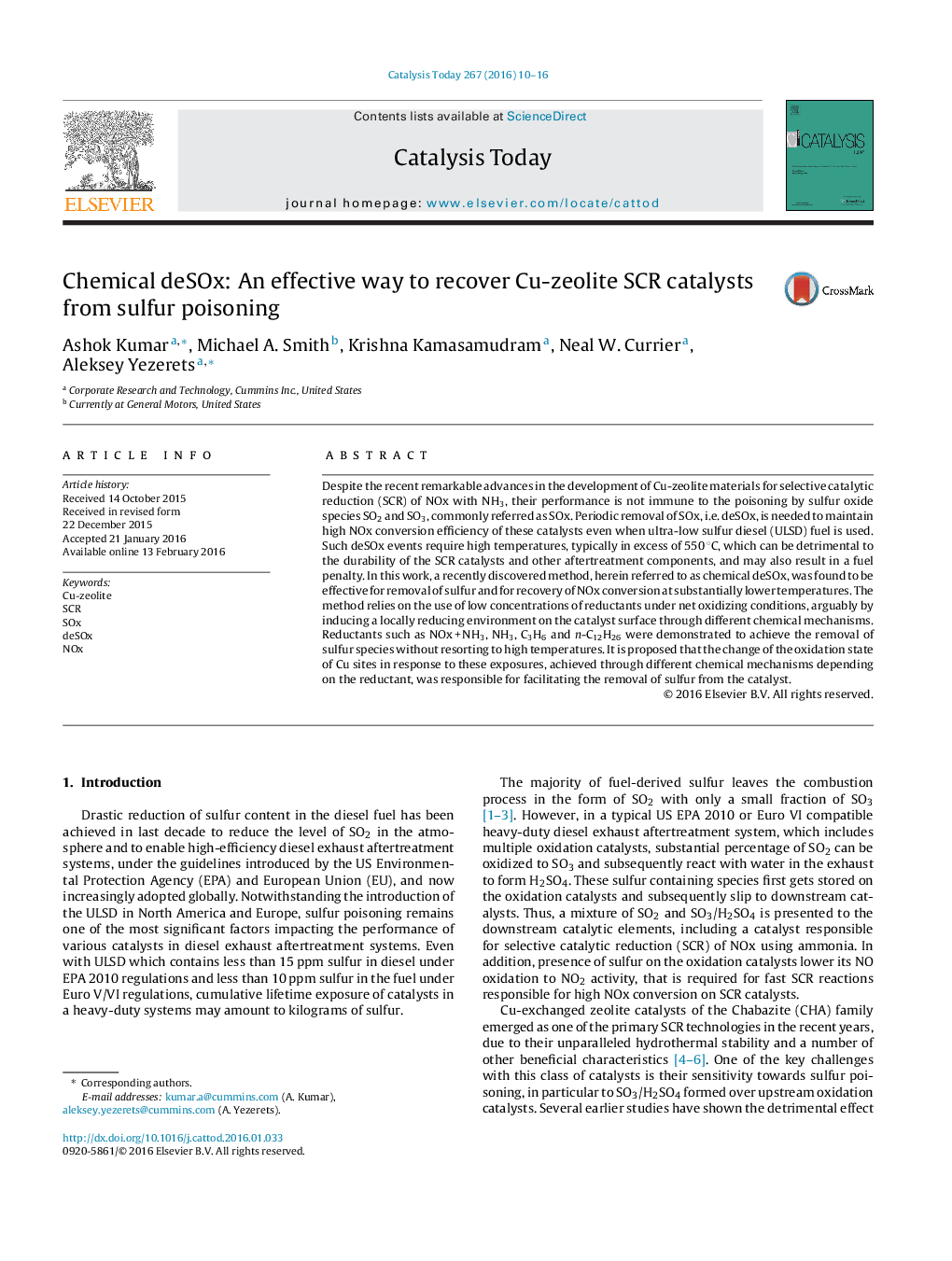| کد مقاله | کد نشریه | سال انتشار | مقاله انگلیسی | نسخه تمام متن |
|---|---|---|---|---|
| 53267 | 46961 | 2016 | 7 صفحه PDF | دانلود رایگان |

• Locally reducing environment under the net oxidizing conditions accelerate the removal of sulfur from a Cu-zeolite catalyst.
• Several reductants such as NOx + NH3, NH3, HCs, or CO in the presence of O2 can be used for chemical deSOx.
• Availability of the reductant along the length of the catalyst plays a key role in chemical deSOx process.
• Chemical deSOx possibly proceeds via formation of Cu1+ followed by weakening of Cu-SOx interaction to release sulfur.
Despite the recent remarkable advances in the development of Cu-zeolite materials for selective catalytic reduction (SCR) of NOx with NH3, their performance is not immune to the poisoning by sulfur oxide species SO2 and SO3, commonly referred as SOx. Periodic removal of SOx, i.e. deSOx, is needed to maintain high NOx conversion efficiency of these catalysts even when ultra-low sulfur diesel (ULSD) fuel is used. Such deSOx events require high temperatures, typically in excess of 550 °C, which can be detrimental to the durability of the SCR catalysts and other aftertreatment components, and may also result in a fuel penalty. In this work, a recently discovered method, herein referred to as chemical deSOx, was found to be effective for removal of sulfur and for recovery of NOx conversion at substantially lower temperatures. The method relies on the use of low concentrations of reductants under net oxidizing conditions, arguably by inducing a locally reducing environment on the catalyst surface through different chemical mechanisms. Reductants such as NOx + NH3, NH3, C3H6 and n-C12H26 were demonstrated to achieve the removal of sulfur species without resorting to high temperatures. It is proposed that the change of the oxidation state of Cu sites in response to these exposures, achieved through different chemical mechanisms depending on the reductant, was responsible for facilitating the removal of sulfur from the catalyst.
Figure optionsDownload high-quality image (192 K)Download as PowerPoint slide
Journal: Catalysis Today - Volume 267, 1 June 2016, Pages 10–16